With their irresistibly cute faces and spunky personalities, Yorkshire Terriers, often affectionately called Yorkies, have captured the hearts of dog lovers worldwide. But behind those tiny frames lies a breed bursting with charisma, intelligence, and a fascinating history. Are you ready to dive into the captivating world of Yorkshire Terriers and uncover why they’re much more than just a pint-sized pup?
Contents Overview
Breed Overview of Yorkshire Terrier
Size: Yorkshire Terriers are small-sized dogs, typically weighing between 4 to 7 pounds (1.8 to 3.2 kilograms). Despite their diminutive stature, they possess a big personality that more than compensates for their size.
Appearance:
- Coat: Yorkies boast a luxurious, silky coat that comes in a striking combination of blue and tan. Their long, flowing fur requires regular grooming to maintain its luster and prevent matting.
- Build: Despite their small size, Yorkshire Terriers are well-proportioned and sturdy. They have a compact body with a level topline, and their elegant carriage gives them an air of confidence.
- Facial Features: With their small, dark eyes sparkling with intelligence, and their tiny ears standing erect atop their head, Yorkies possess an irresistibly adorable expression that melts hearts wherever they go.
Life Span: On average, Yorkshire Terriers have a lifespan of 12 to 15 years. With proper care, nutrition, and regular veterinary check-ups, they can live long, healthy lives, bringing joy to their families for many years.
History and Origins of Yorkshire Terrier
The Yorkshire Terrier, affectionately known as the Yorkie, has a rich history that traces back to the Industrial Revolution era in 19th century England. Here’s a closer look at the fascinating origins of this beloved breed:
Early Beginnings:
- The Yorkshire Terrier’s roots can be traced to the mid-19th century in the counties of Yorkshire and Lancashire, England. During this time, Scottish workers migrated to Yorkshire in search of job opportunities in the burgeoning textile industry.
- These Scottish immigrants brought with them various terrier breeds, including the Paisley Terrier and the Skye Terrier, which were then crossed with local terriers to create the foundation for the Yorkshire Terrier we know today.
Development of the Breed:
- Yorkshire Terriers were originally bred for the specific purpose of catching rats and mice in the textile mills and mines of Yorkshire. Their small size and fearless nature made them well-suited for this task.
- As the breed gained popularity, especially among the fashionable elite in Victorian England, breeders began refining its appearance through selective breeding. This led to the development of the distinctive long, silky coat and the characteristic blue and tan coloration that are hallmarks of the breed today.
Recognition and Standardization:
- The Yorkshire Terrier was officially recognized by the Kennel Club in England in the late 19th century. The first Yorkshire Terrier club was formed in 1898, further solidifying the breed’s status.
- In 1872, the breed made its debut in the United States when a Yorkshire Terrier named Huddersfield Ben was imported from England. Huddersfield Ben became one of the breed’s foundation sires in America, and his descendants played a significant role in establishing the breed in the U.S.
Continued Popularity:
- Over the years, Yorkshire Terriers have continued to capture the hearts of dog lovers around the world with their charm, intelligence, and affectionate nature. They have become cherished companions and beloved family pets, known for their loyalty and devotion to their owners.
- Today, the Yorkshire Terrier ranks consistently among the most popular dog breeds globally, admired for its compact size, playful personality, and undeniable allure. From its humble beginnings as a working-class hero to its current status as a beloved household companion, the Yorkshire Terrier’s journey is a testament to the enduring appeal of this remarkable breed.
Temperament and Personality of Yorkshire Terrier
The Yorkshire Terrier, or Yorkie, may be small in size, but it boasts a larger-than-life personality that endears it to dog lovers worldwide. Here’s a closer look at the temperament and personality traits that make the Yorkie such a delightful companion:
- Affectionate and Loyal:
- Yorkies are known for their deep affection and loyalty towards their owners. They form strong bonds with their human family members and thrive on companionship and attention.
- Confident and Fearless:
- Despite their petite stature, Yorkshire Terriers possess a confident and fearless demeanor. They are not intimidated by larger dogs and will stand their ground when faced with challenges.
- Playful and Energetic:
- Yorkies have a playful and spirited nature that belies their small size. They love to engage in games and activities, whether it’s playing fetch, going for walks, or simply romping around the house.
- Alert and Watchful:
- With their keen senses and sharp instincts, Yorkshire Terriers make excellent watchdogs. They are always on the lookout for any signs of danger and will alert their owners to any perceived threats with their distinctive bark.
- Intelligent and Trainable:
- Despite their independent streak, Yorkies are highly intelligent and can be trained with patience and consistency. They excel in activities such as obedience training and agility, and they love to learn new tricks to impress their owners.
- Spirited and Vocal:
- Yorkies are known for their spirited personality and tendency to be vocal. They are not shy about expressing their thoughts and feelings, whether it’s through barking, whining, or playful vocalizations.
- Affectionate with Children and Other Pets:
- When properly socialized from a young age, Yorkshire Terriers can get along well with children and other pets. They enjoy the company of their human and furry companions and thrive in households where they receive plenty of love and attention.
- Independent Yet Affectionate:
- While Yorkies have an independent streak, they are also incredibly affectionate and enjoy cuddling up with their owners. They crave attention and thrive on affectionate interactions with their human family members.
Exercise and Training Needs of Yorkshire Terriers
Ensuring that your Yorkshire Terrier remains happy and healthy involves meeting their exercise and training needs. Despite their small size, Yorkies are energetic and intelligent dogs that require mental stimulation and physical activity to thrive. Here’s a detailed guide on how to fulfill these needs:
Exercise Needs:
- Daily Walks: Yorkies benefit from daily walks to fulfill their exercise requirements and provide mental stimulation. Aim for at least 20 to 30 minutes of brisk walking per day, divided into multiple short walks if needed.
- Playtime: Engage your Yorkie in interactive play sessions to keep them active and entertained. Toys such as balls, squeaky toys, and interactive puzzle toys can help keep their minds engaged and prevent boredom.
- Indoor Activities: During inclement weather or when outdoor walks are not possible, engage your Yorkie in indoor activities such as fetch, hide-and-seek, or teaching them new tricks.
- Socialization: Take your Yorkie to dog parks or arrange playdates with other small, well-behaved dogs to provide socialization opportunities and promote healthy interaction skills.
Training Needs:
- Basic Obedience Training: Start training your Yorkie as early as possible to instill good manners and obedience. Teach basic commands such as sit, stay, come, and down using positive reinforcement techniques like treats and praise.
- House Training: Establish a consistent bathroom routine and use positive reinforcement to encourage your Yorkie to eliminate in designated areas outdoors. Crate training can also be beneficial for housebreaking.
- Leash Training: Teach your Yorkie to walk politely on a leash without pulling. Use rewards and encouragement to reinforce good leash manners and correct undesirable behavior gently.
- Socialization: Expose your Yorkie to various people, animals, sounds, and environments from a young age to prevent fearfulness and aggression. Positive experiences during socialization help shape a well-adjusted and confident adult dog.
- Patience and Consistency: Yorkies are intelligent but can be stubborn at times. Be patient and consistent in your training efforts, and avoid using harsh punishments, as this can undermine trust and cause anxiety.
- Continued Learning: Keep your Yorkie mentally stimulated by introducing new training challenges and activities regularly. Advanced obedience training, agility courses, or canine sports such as rally or flyball can provide mental and physical enrichment.
Yorkshire Terrier’s Coat: Type and Length
The Yorkshire Terrier’s coat is one of its most distinctive features, prized for its luxurious texture and striking coloration. Here’s a closer look at the type and length of the Yorkshire Terrier’s coat:
Type:
- Yorkshire Terriers have a double-layered coat consisting of a soft, fine undercoat and a longer, silky outer coat.
- The outer coat is straight, glossy, and flowing, with a fine texture that resembles human hair. It should lie close to the body and have a sheen that reflects light.
- The undercoat, while less visible, provides insulation and adds to the overall density of the coat.
Length:
- The length of a Yorkshire Terrier’s coat can vary, but it is typically long and flowing, reaching to the ground when fully grown.
- Show-quality Yorkies often have coats that are meticulously groomed to maintain maximum length and volume, giving them a regal and elegant appearance.
- Pet-quality Yorkies may have slightly shorter coats, but they still retain the characteristic silky texture and luxurious feel.
Grooming Requirements:
- Due to the length and texture of their coat, Yorkshire Terriers require regular grooming to keep them looking their best.
- Daily brushing is recommended to prevent matting and tangling, as well as to remove loose hair and debris.
- Bathing should be done as needed, using a mild dog shampoo formulated for long-haired breeds. Be sure to thoroughly rinse out all shampoo residue to prevent skin irritation.
- Regular trimming of the hair around the eyes and ears is necessary to prevent irritation and maintain good hygiene.
- Professional grooming every 4 to 6 weeks can help keep your Yorkie’s coat in top condition and ensure they always look their best.
Grooming and Care - Yorkshire Terrier
Grooming and care are essential aspects of keeping your Yorkshire Terrier healthy, comfortable, and looking their best. Despite their small size, Yorkies require regular grooming due to their long, luxurious coat and specific grooming needs. Here’s a comprehensive guide to grooming and caring for your Yorkshire Terrier:
- Brushing:
- Daily brushing is recommended to prevent mats and tangles in your Yorkie’s long coat.
- Use a metal comb or slicker brush to gently remove loose hair and debris, starting from the ends of the hair and working your way up to the roots.
- Pay special attention to areas prone to tangling, such as behind the ears, under the legs, and around the tail.
- Bathing:
- Bathe your Yorkshire Terrier every 3 to 4 weeks or as needed, using a mild dog shampoo formulated for long-haired breeds.
- Thoroughly wet your Yorkie’s coat with warm water, lather with shampoo, and rinse thoroughly to remove all soap residue.
- Avoid getting water and shampoo in your Yorkie’s eyes and ears, and use a damp cloth to clean these areas separately.
- Hair Trimming:
- Trim the hair around your Yorkie’s eyes to prevent irritation and improve visibility. Use blunt-nosed scissors and be careful not to poke or injure your dog’s eyes.
- Trim the hair on the ears and around the paw pads to keep them clean and prevent matting.
- Regularly trim the hair on the bottom of your Yorkie’s feet to prevent slipping and improve traction.
- Nail Care:
- Trim your Yorkie’s nails every 2 to 4 weeks to prevent overgrowth and discomfort.
- Use a pair of dog nail clippers to trim the tips of the nails, being careful not to cut into the quick (the pink area containing blood vessels and nerves).
- Dental Care:
- Brush your Yorkie’s teeth daily or at least three times a week to prevent dental problems such as tartar buildup and gum disease.
- Use a dog-specific toothbrush and toothpaste to gently brush your Yorkie’s teeth and gums, paying special attention to the back molars where plaque tends to accumulate.
- Ear Cleaning:
- Check your Yorkie’s ears regularly for signs of infection or irritation, such as redness, swelling, or a foul odor.
- Use a damp cotton ball or soft cloth to gently wipe the outer ear and remove dirt and wax buildup. Avoid inserting anything into your Yorkie’s ear canal.
- Eye Care:
- Keep your Yorkie’s eyes clean and free from discharge by wiping them with a damp cloth or cotton ball as needed.
- If your Yorkie’s eyes appear red, watery, or irritated, consult your veterinarian as these may be signs of an underlying eye infection or health issue.
Shedding Level- Yorkshire Terrier
Yorkshire Terriers are often favored by individuals with allergies or those who prefer a low-shedding breed. However, it’s important to understand that while Yorkies do shed minimally, they are not entirely hypoallergenic. Here’s a closer look at the shedding level of Yorkshire Terriers:
- Minimal Shedding:
- Yorkshire Terriers are considered to be low-shedding dogs, which means they shed very little hair compared to other breeds.
- Their long, silky coat tends to trap shed hair, reducing the amount of hair that ends up on furniture, clothing, and floors.
- Seasonal Shedding:
- Like all dogs, Yorkshire Terriers may experience some seasonal shedding, typically during the spring and fall as their coat adjusts to changes in temperature and daylight hours.
- During these times, you may notice a slightly increased amount of loose hair, but regular grooming can help minimize shedding and keep your Yorkie’s coat looking its best.
- Regular Grooming:
- Daily brushing helps remove loose hair and prevents matting, reducing the amount of hair shed around the home.
- Keeping your Yorkie’s coat clean and well-maintained through regular baths and grooming sessions can also help minimize shedding and keep their coat healthy and shiny.
- Allergies:
- While Yorkshire Terriers are considered hypoallergenic to some extent due to their minimal shedding, they still produce dander (dead skin cells) and saliva, which can trigger allergies in sensitive individuals.
- It’s essential to spend time with a Yorkie before bringing one into your home if you or a family member have allergies to ensure compatibility.
Common Health Issues - Yorkshire Terrier
While Yorkshire Terriers are generally healthy dogs, like all breeds, they may be prone to certain health issues. Being aware of these common health concerns can help you provide the best possible care for your Yorkshire Terrier. Here are some of the most prevalent health issues in Yorkshire Terriers:
- Dental Problems:
- Yorkies are prone to dental issues such as tooth decay, gum disease, and tooth loss. Their small mouths and crowded teeth make them susceptible to plaque and tartar buildup.
- Regular dental care, including daily tooth brushing and professional cleanings, is essential to maintain your Yorkie’s oral health and prevent dental problems.
- Patellar Luxation:
- Patellar luxation is a condition where the kneecap (patella) dislocates or moves out of its normal position. This can cause lameness, pain, and difficulty walking.
- Yorkies may be predisposed to patellar luxation due to their small size and genetics. In severe cases, surgical intervention may be necessary to correct the condition.
- Tracheal Collapse:
- Tracheal collapse is a common respiratory condition in Yorkies, characterized by a weakening or collapsing of the tracheal cartilage. This can lead to coughing, gagging, and difficulty breathing, especially during exercise or excitement.
- Management of tracheal collapse may include weight management, avoiding collars that put pressure on the neck, and using a harness instead.
- Portosystemic Shunt (Liver Shunt):
- A portosystemic shunt is a congenital abnormality where blood bypasses the liver, leading to improper detoxification and nutrient absorption. Symptoms may include stunted growth, neurological issues, and gastrointestinal problems.
- Treatment options for liver shunts may include surgery to redirect blood flow or medical management to control symptoms and improve quality of life.
- Hypoglycemia:
- Hypoglycemia, or low blood sugar, is common in Yorkshire Terrier puppies, especially during the first few months of life. Small breed puppies have a higher metabolic rate and may struggle to regulate their blood sugar levels.
- Symptoms of hypoglycemia in Yorkie puppies include weakness, lethargy, tremors, and seizures. Immediate treatment with sugar supplements or veterinary care is necessary to prevent complications.
- Eye Problems:
- Yorkshire Terriers may be predisposed to various eye conditions, including cataracts, progressive retinal atrophy (PRA), and dry eye (keratoconjunctivitis sicca).
- Regular eye examinations by a veterinarian can help detect and manage eye issues early to prevent vision loss and maintain your Yorkie’s ocular health.
- Legg-Calvé-Perthes Disease:
- Legg-Calvé-Perthes disease is a condition that affects the hip joint, leading to degeneration of the femoral head due to poor blood supply. This can cause pain, lameness, and limping.
- Treatment options for Legg-Calvé-Perthes disease may include medication, physical therapy, or surgical intervention, depending on the severity of the condition.
- Allergies:
- Yorkshire Terriers may be prone to allergies, including food allergies, environmental allergies (such as pollen or dust mites), and skin allergies.
- Symptoms of allergies in Yorkies may include itching, scratching, licking, and skin irritation. Identifying and avoiding allergens, along with appropriate veterinary treatment, can help manage allergy symptoms.
Drooling Level - Yorkshire Terrier
Yorkshire Terriers are not known for excessive drooling. They are considered to be a low-drooling breed. Here’s a closer look at the drooling level of Yorkshire Terriers:
- Minimal Drooling:
- Yorkshire Terriers typically do not drool excessively compared to some other breeds. They have relatively small mouths and do not produce large amounts of saliva.
- Occasional drooling may occur, especially in situations such as anticipation of food or excitement, but it is usually minimal and not a cause for concern.
- Factors Affecting Drooling:
- While Yorkies are generally low-drooling dogs, individual variations in drooling levels may occur. Factors such as genetics, health, and diet can influence drooling tendencies.
- Dental issues, mouth pain, or oral infections may cause increased drooling in Yorkshire Terriers. Regular dental care and veterinary check-ups can help prevent such problems.
- Environment and Behavior:
- Environmental factors and behavioral triggers can also affect drooling in Yorkshire Terriers. Stress, anxiety, or fear may lead to panting and increased salivation, resulting in temporary drooling.
- High temperatures or physical exertion may cause panting in Yorkies, which can sometimes result in minor drooling as they regulate their body temperature.
- Health Considerations:
- While occasional drooling is normal for Yorkshire Terriers, excessive or persistent drooling may indicate an underlying health issue such as oral pain, gastrointestinal problems, or dental disease.
- If you notice a sudden increase in drooling or any other concerning symptoms in your Yorkie, it’s essential to consult with a veterinarian for proper evaluation and diagnosis.
Nutrition and Diet - Yorkshire Terrier
Providing a well-balanced diet is crucial for maintaining the health and well-being of your Yorkshire Terrier. These pint-sized pups have specific nutritional needs that should be met through high-quality food and proper feeding practices. Here’s a comprehensive guide to nutrition and diet for Yorkshire Terriers:
- High-Quality Dog Food:
- Choose a high-quality commercial dog food specifically formulated for small breeds or all life stages, as recommended by your veterinarian.
- Look for dog foods that list a protein source (such as chicken, beef, or fish) as the first ingredient and contain balanced levels of carbohydrates, fats, vitamins, and minerals.
- Small Breed Formulas:
- Yorkshire Terriers have small stomachs and high metabolisms, so opt for dog food formulated for small breeds to ensure proper digestion and nutrient absorption.
- Small breed formulas often have smaller kibble sizes, making them easier for Yorkies to chew and digest.
- Protein and Fat Content:
- Yorkies require a diet rich in protein and moderate in fat to support their energy levels and maintain muscle mass. Aim for a dog food with at least 25-30% protein and 10-15% fat content.
- Avoid overfeeding fat, as Yorkies can be prone to obesity, which can lead to various health issues.
- Balanced Nutrition:
- Ensure your Yorkshire Terrier’s diet includes a balanced ratio of proteins, carbohydrates, fats, vitamins, and minerals essential for overall health and vitality.
- Avoid feeding table scraps or excessive treats, as these can contribute to nutritional imbalances and weight gain.
- Feeding Schedule:
- Establish a consistent feeding schedule with two to three meals per day, depending on your Yorkie’s age, activity level, and individual needs.
- Avoid free-feeding (leaving food out all day), as this can lead to overeating and obesity.
- Fresh Water:
- Provide your Yorkshire Terrier with access to fresh, clean water at all times to prevent dehydration and support proper hydration.
- Special Considerations:
- Yorkies may have specific dietary needs or sensitivities, such as allergies or digestive issues. Consult with your veterinarian to determine the best diet for your individual Yorkie.
- Senior Yorkies may require specialized senior dog food formulas tailored to their changing nutritional needs, such as lower calorie content and joint support ingredients.
- Regular Monitoring:
- Monitor your Yorkshire Terrier’s weight, body condition, and overall health regularly, and adjust their diet as needed to maintain an ideal body condition score.
Living Environment and Housing - Yorkshire Terrier
Creating a suitable living environment for your Yorkshire Terrier is essential for their health, safety, and overall well-being. As small and adaptable dogs, Yorkies can thrive in various living situations, including apartments, houses, and urban or rural settings. Here’s a comprehensive guide to housing and living environment considerations for Yorkshire Terriers:
- Indoor Living:
- Yorkshire Terriers are indoor dogs and should live indoors with their human family members. They are not suited to outdoor living due to their small size, delicate build, and sensitivity to extreme temperatures.
- Create a comfortable indoor space for your Yorkie with access to cozy bedding, toys, and a designated area for meals and rest.
- Size and Space:
- Despite their small size, Yorkshire Terriers are active and energetic dogs that require space to move around and play. Ensure that your living space is large enough to accommodate your Yorkie’s exercise and activity needs.
- Yorkies are well-suited to apartment living, but regular walks and indoor playtime are essential to prevent boredom and excess energy.
- Safety Measures:
- Yorkies have a curious nature and may get into mischief if left unsupervised. Puppy-proof your home by removing any potential hazards, such as small objects, toxic plants, electrical cords, and accessible household chemicals.
- Use baby gates or barriers to restrict access to areas of the house where your Yorkie should not go, such as stairs or rooms with dangerous objects.
- Climate Control:
- Yorkshire Terriers are sensitive to temperature extremes and should be kept in a climate-controlled environment, especially during hot or cold weather.
- Avoid leaving your Yorkie outdoors for extended periods in extreme heat or cold, as they are prone to overheating or hypothermia.
- Exercise Opportunities:
- Despite their small size, Yorkshire Terriers have moderate exercise needs and enjoy daily walks and indoor play sessions.
- Provide opportunities for your Yorkie to exercise and explore their surroundings, whether it’s through walks in the neighborhood, playtime in the backyard, or interactive toys and games indoors.
- Socialization and Interaction:
- Yorkies thrive on human companionship and enjoy spending time with their family members. Ensure that your Yorkie receives plenty of socialization and interaction to prevent loneliness and separation anxiety.
- Arrange playdates with other small, friendly dogs or invite friends and family members over to interact with your Yorkie and provide mental stimulation.
- Routine and Structure:
- Establish a daily routine for your Yorkshire Terrier, including regular feeding times, potty breaks, exercise sessions, and rest periods. Consistency and structure help provide a sense of security and stability for your Yorkie.
Barking Level - Yorkshire Terrier
Yorkshire Terriers are known for their alert and vocal nature, and they are not shy about expressing themselves through barking. While they may be small in size, Yorkies have big personalities and are often quite vocal compared to some other breeds. Here’s what you need to know about the barking level of Yorkshire Terriers:
- Alertness:
- Yorkshire Terriers are naturally alert dogs and have a keen sense of hearing. They are quick to detect changes in their environment and may bark in response to unfamiliar sounds, people, or animals.
- Their alertness makes them excellent watchdogs, as they will readily alert their owners to any perceived threats or intruders.
- Vocalization:
- Yorkies are known for their tendency to bark, and they may bark at various stimuli, including doorbells, strangers, other animals, or even their reflection.
- While some barking is normal behavior for Yorkshire Terriers, excessive barking can become a nuisance, especially in urban or shared living environments.
- Training and Management:
- Proper training and socialization from a young age can help mitigate excessive barking in Yorkshire Terriers. Teaching them basic obedience commands such as “quiet” or “enough” can help them learn to control their barking behavior.
- Positive reinforcement techniques, such as rewarding calm behavior and ignoring or redirecting excessive barking, can be effective in managing barking in Yorkies.
- Environmental Enrichment:
- Providing mental stimulation and enrichment activities can help prevent boredom and reduce excessive barking in Yorkshire Terriers. Interactive toys, puzzle feeders, and regular play sessions can help keep them mentally engaged and satisfied.
- Ensuring that your Yorkie receives plenty of exercise and attention can also help reduce boredom-related barking.
- Attention-Seeking Behavior:
- Like many small dogs, Yorkshire Terriers may resort to barking as a means of seeking attention or expressing their needs. It’s essential to address the underlying cause of the barking and provide appropriate outlets for attention and interaction.
- Consistency and Patience:
- Consistent training and management techniques, coupled with patience and understanding, are key to addressing excessive barking in Yorkshire Terriers. It may take time for them to learn appropriate barking behavior, so be patient and consistent in your approach.
Trainability Level - Yorkshire Terrier
Yorkshire Terriers, known for their intelligence and independent spirit, possess a moderate level of trainability. While they can be quick learners and excel in various training activities, they also have their own opinions and may exhibit stubbornness at times. Here’s a closer look at the trainability level of Yorkshire Terriers:
- Intelligence:
- Yorkshire Terriers are intelligent dogs with a keen ability to learn and problem-solve. They can quickly pick up on commands and cues when properly motivated and rewarded.
- Their intelligence makes them well-suited for obedience training, agility, and other canine sports that challenge their mental abilities.
- Independence:
- Yorkies have a strong independent streak and may display a “what’s in it for me?” attitude during training sessions. They prefer training methods that are engaging, positive, and offer rewards for good behavior.
- Their independent nature may require patience and persistence from owners, as they may test boundaries and resist commands at times.
- Positive Reinforcement:
- Positive reinforcement techniques, such as using treats, praise, and toys as rewards, are highly effective in training Yorkshire Terriers. They respond well to encouragement and praise and thrive on positive interactions with their owners.
- Harsh or punitive training methods are not recommended for Yorkies, as they can be sensitive and may become fearful or resistant to training.
- Socialization:
- Early socialization is crucial for Yorkshire Terriers to help them develop good manners, confidence, and appropriate behavior around people and other animals.
- Exposing them to various environments, sounds, sights, and experiences from a young age can help prevent fearfulness and aggression and promote well-rounded social skills.
- Consistency and Patience:
- Consistency and patience are key when training Yorkshire Terriers. They may require repeated practice and reinforcement to master commands and behaviors.
- Short, frequent training sessions with plenty of positive reinforcement are more effective than long, repetitive sessions that may lead to frustration for both the dog and the owner.
- Basic Obedience:
- Yorkshire Terriers can learn basic obedience commands such as sit, stay, come, down, and heel with consistent training and positive reinforcement.
- It’s important to start training early and be consistent with commands and expectations to establish good habits and manners from the beginning.
Socialization and Interaction - Yorkshire Terrier
Socialization and interaction are vital aspects of raising a well-adjusted Yorkshire Terrier. While Yorkies are small in size, they have big personalities and thrive on companionship and positive experiences with people and other animals. Here’s a comprehensive guide to socialization and interaction for Yorkshire Terriers:
- Early Socialization:
- Start socializing your Yorkshire Terrier from a young age, ideally between 3 and 12 weeks old. Early socialization helps your Yorkie develop confidence, resilience, and appropriate social skills.
- Expose your Yorkie to a variety of people, including adults, children, and strangers, as well as other animals such as dogs, cats, and small pets. Positive interactions during this critical period can help prevent fearfulness and aggression later in life.
- Positive Experiences:
- Make socialization and interaction a positive and enjoyable experience for your Yorkshire Terrier. Use treats, praise, and toys to reward calm and friendly behavior when meeting new people and animals.
- Arrange playdates with other well-behaved dogs and puppies in a safe and controlled environment to provide opportunities for socialization and exercise.
- Puppy Classes:
- Enroll your Yorkshire Terrier in puppy kindergarten classes or obedience training classes designed specifically for small breeds. These classes offer structured socialization opportunities and teach basic obedience commands in a supportive environment.
- Exposure to Environments:
- Introduce your Yorkie to various environments, sounds, sights, and experiences to help them become confident and adaptable. Take them for walks in different neighborhoods, parks, and public spaces to expose them to new stimuli.
- Gradually expose your Yorkie to different surfaces, textures, and situations, such as car rides, elevators, stairs, and grooming sessions, to desensitize them and build their confidence.
- Supervised Playtime:
- Supervise interactions between your Yorkshire Terrier and other dogs, especially larger breeds, to ensure safety and prevent accidents. Yorkies may be fearless, but their small size makes them vulnerable to injury during rough play.
- Teach your Yorkie appropriate play behavior and intervene if play becomes too rough or aggressive to prevent conflicts and promote positive interactions.
- Positive Reinforcement:
- Use positive reinforcement techniques to reward desirable social behaviors in your Yorkshire Terrier, such as approaching new people and animals calmly, responding to commands, and exhibiting friendly body language.
- Avoid punishment or harsh corrections, as these can undermine trust and confidence and may lead to fearfulness or aggression.
- Regular Interaction:
- Spend quality time interacting with your Yorkshire Terrier daily to strengthen your bond and build trust. Engage in activities such as playtime, training sessions, walks, and cuddling to provide mental and physical stimulation.
- Be attentive to your Yorkie’s needs and emotions, and respond appropriately to their cues to foster a positive and nurturing relationship.
Choosing a Responsible Breeder or Rescue Organization - Yorkshire Terrier
Choosing a responsible breeder or rescue organization is crucial when adding a Yorkshire Terrier to your family. Whether you opt for a purebred Yorkie from a breeder or a rescue dog from a shelter or rescue group, it’s essential to ensure that the source is reputable and prioritizes the health and well-being of the dogs. Here’s a comprehensive guide to help you choose a responsible breeder or rescue organization for a Yorkshire Terrier:
- Research:
- Start by researching reputable breeders or rescue organizations in your area. Look for breed clubs, kennel clubs, and rescue groups that specialize in Yorkshire Terriers.
- Utilize online resources, such as breed-specific forums, websites, and social media groups, to gather information and recommendations from other Yorkie owners.
- Responsible Breeder Criteria:
- Look for breeders who are dedicated to breeding healthy, well-socialized Yorkshire Terriers with good temperaments and conforming to the breed standard.
- Responsible breeders conduct health screenings for genetic conditions common in Yorkies, provide proper veterinary care, and prioritize the physical and emotional well-being of their dogs.
- Ask breeders about the health history of the parent dogs, including genetic testing for inherited diseases such as patellar luxation, Legg-Calvé-Perthes disease, and portosystemic shunts.
- Visit the breeder’s facility in person to assess the cleanliness, living conditions, and overall welfare of the dogs. A responsible breeder will welcome your visit and be transparent about their breeding practices.
- Adoption Process:
- When considering rescue organizations, inquire about their adoption process, including application requirements, adoption fees, and screening procedures.
- Reputable rescue organizations conduct thorough assessments of potential adopters to ensure compatibility and provide ongoing support and resources post-adoption.
- Ask about the background and history of the rescue dogs available for adoption, including any known medical or behavioral issues, temperament, and socialization.
- References and Reviews:
- Request references from previous clients or adopters who have acquired Yorkshire Terriers from the breeder or rescue organization. Positive testimonials and reviews can provide valuable insight into the quality of their dogs and services.
- Research the breeder or rescue organization online to check for any red flags or complaints. Look for reviews, ratings, and feedback from previous customers or adopters to gauge their reputation and credibility.
- Commitment to Responsible Ownership:
- Choose a breeder or rescue organization that demonstrates a commitment to responsible ownership and education. They should guide proper care, training, and nutrition for Yorkshire Terriers and offer support throughout the dog’s life.
- Avoid sources that prioritize profit over the well-being of the dogs or engage in unethical breeding practices, such as puppy mills or backyard breeders.
- Visit and Meet the Dogs:
- Whenever possible, visit the breeder or rescue organization in person to meet the dogs and assess their temperament, behavior, and living conditions.
- Take note of how the dogs interact with each other and with people, as well as their overall health and appearance. Trust your instincts and choose a breeder or rescue organization that prioritizes the welfare of the dogs.
- Adoption vs. Purchase:
- Consider adopting a Yorkshire Terrier from a rescue organization or shelter, as there are many loving dogs in need of forever homes. Adoption not only saves a life but also supports the mission of rescue organizations to promote responsible pet ownership and reduce pet overpopulation.
Adoption Considerations - Yorkshire Terrier
When considering adopting a Yorkshire Terrier, there are several important factors to take into account to ensure a successful and fulfilling adoption experience. Yorkshire Terriers, like all dogs, have their own unique needs, characteristics, and care requirements. Here are some key considerations to keep in mind when adopting a Yorkshire Terrier:
- Commitment and Responsibility:
- Adopting a Yorkshire Terrier is a long-term commitment that requires time, effort, and resources. Be prepared to provide love, care, and attention to your adopted Yorkie for their entire life, which could be 12 to 15 years or more.
- Ensure that you have the time and resources to meet your Yorkie’s needs, including regular exercise, grooming, veterinary care, and companionship.
- Lifestyle Compatibility:
- Consider your lifestyle and living situation when adopting a Yorkshire Terrier. While Yorkies are small in size, they are active and energetic dogs that require daily exercise and mental stimulation.
- Determine if your schedule allows for regular walks, playtime, and interaction with your Yorkie, as well as if your living space is suitable for a small dog.
- Financial Responsibility:
- Owning a dog, including a Yorkshire Terrier, comes with financial responsibilities. Budget for expenses such as food, grooming supplies, veterinary care, vaccinations, preventive medications, and unexpected medical emergencies.
- Consider the costs associated with adopting a Yorkie, including adoption fees, initial supplies, and ongoing expenses, to ensure that you can provide for your adopted dog’s needs.
- Health and Medical History:
- Inquire about the health and medical history of the Yorkshire Terrier you are considering for adoption. Ask about any known medical conditions, vaccinations, preventive treatments, and spaying or neutering status.
- Schedule a veterinary check-up soon after adoption to assess your Yorkie’s overall health and address any medical concerns or preventive care needs.
- Behavioral and Temperament Assessment:
- Spend time getting to know the Yorkshire Terrier you are considering for adoption to assess their temperament, personality, and compatibility with your household.
- Observe how the Yorkie interacts with people, children, other animals, and various environments to ensure a good match for your family and lifestyle.
- Training and Socialization Needs:
- Determine the training and socialization needs of the Yorkshire Terrier you are considering for adoption. Assess their current level of obedience, house training, and behavior to identify areas for improvement.
- Be prepared to invest time and effort into training and socializing your adopted Yorkie to ensure that they become a well-behaved and well-adjusted member of your family.
- Adoption Process and Support:
- Familiarize yourself with the adoption process and requirements of the rescue organization or shelter from which you are considering adopting a Yorkshire Terrier. Complete any necessary applications, interviews, and screenings as part of the adoption process.
- Take advantage of any support, resources, and guidance offered by the rescue organization or shelter to help you make a smooth transition and adjustment with your adopted Yorkie.
Compatibility with Children and Other Pets - Yorkshire Terrier
When considering adding a Yorkshire Terrier to a household with children and other pets, it’s important to evaluate compatibility and take appropriate steps to ensure a harmonious and safe environment for everyone involved. While Yorkshire Terriers can make wonderful family pets, their temperament, behavior, and interactions with children and other animals should be carefully considered. Here are some key points to keep in mind regarding compatibility with children and other pets:
- Temperament and Behavior:
- Yorkshire Terriers are known for their feisty, affectionate, and loyal nature. They can form strong bonds with their human family members and often enjoy spending time with children.
- However, Yorkies are small dogs with delicate frames, and they may not tolerate rough handling or excessive noise from young children. Proper supervision and guidance are essential to prevent accidents or injuries.
- Socialization and Training:
- Early socialization and positive experiences with children are crucial for Yorkshire Terriers to develop good manners, patience, and tolerance. Introduce your Yorkie to children of all ages in a calm and controlled manner, and teach children how to interact respectfully with the dog.
- Basic obedience training, including commands such as “sit,” “stay,” and “leave it,” can help establish boundaries and reinforce appropriate behavior around children and other pets.
- Supervision and Boundaries:
- Always supervise interactions between Yorkshire Terriers and young children to prevent any potential mishaps or misunderstandings. Teach children to approach and handle the dog gently and respectfully, avoiding behaviors such as pulling on ears or tail.
- Create designated safe spaces and boundaries for your Yorkie where they can retreat and have alone time if they feel overwhelmed or need a break from children or other pets.
- Compatibility with Other Pets:
- Yorkshire Terriers can coexist peacefully with other pets, including dogs, cats, and small animals, with proper introductions and socialization. Monitor initial interactions between your Yorkie and other pets, and intervene if any signs of aggression or discomfort arise.
- Respect the individual personalities and preferences of all pets in the household, and provide each with their own space, resources, and attention to prevent jealousy or competition.
- Communication and Education:
- Educate children about dog safety and responsible pet ownership, including the importance of gentle handling, respect for personal space, and understanding canine body language.
- Encourage open communication between children and adults regarding any concerns, conflicts, or misunderstandings involving the Yorkshire Terrier or other pets. Address any issues promptly and constructively to maintain a positive and supportive family dynamic.
- Patience and Understanding:
- Adjusting to life with a Yorkshire Terrier and integrating them into a household with children and other pets may take time and patience. Be patient and understanding as everyone adapts to new routines, boundaries, and dynamics.
- Offer plenty of love, attention, and positive reinforcement to your Yorkie and other pets to foster strong bonds and a sense of security within the family unit.
Breed-Specific Legislation and Regulations – Yorkshire Terrier
Breed-specific legislation (BSL) refers to laws and regulations that target specific dog breeds, often based on stereotypes and misconceptions rather than individual behavior. While Yorkshire Terriers are generally not among the breeds commonly targeted by BSL, owners need to stay informed about any local ordinances or regulations that may affect them. For example, some municipalities may have restrictions on the number of dogs allowed per household or leash laws that apply to all breeds. Yorkshire Terrier owners must comply with local laws and advocate for fair and evidence-based legislation that focuses on responsible pet ownership and behavior rather than breed discrimination.
Famous Dogs of the Yorkshire Terrier
- Smoky: A Yorkshire Terrier famous for her service during World War II, Smoky was a war dog who served in the Pacific Theater and became known for her bravery and intelligence.
- Lucy: A beloved Yorkshire Terrier known for her role as “Tinkerbell” in the reality television series “The Simple Life” starring Paris Hilton and Nicole Richie.
- Pasha: Recognized as the smallest dog in the world by the Guinness World Records, Pasha was a Yorkshire Terrier who weighed just 1 pound and measured 5.4 inches tall.
- Huddersfield Ben: Considered the foundation sire of the Yorkshire Terrier breed, Huddersfield Ben was a champion show dog in the late 19th century and is credited with influencing the breed’s development.
Bottom Line
In conclusion, the Yorkshire Terrier is a beloved and iconic small breed known for its spirited personality, glamorous appearance, and loyal companionship. From its origins in England to its popularity worldwide, the Yorkie has captured the hearts of dog lovers everywhere. Whether as a cherished family pet, a show dog, or a heroic service animal, the Yorkshire Terrier continues to leave a lasting paw print on the world.

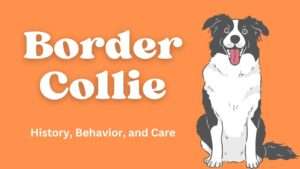


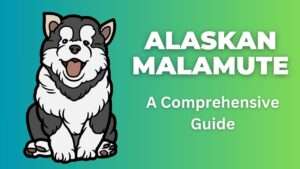


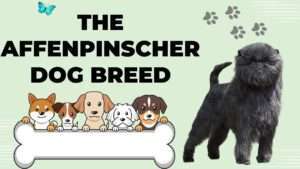


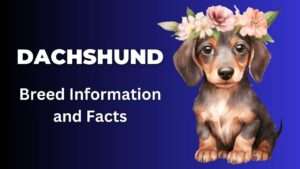
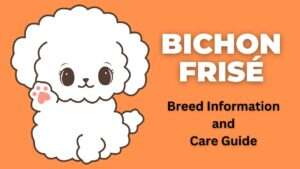
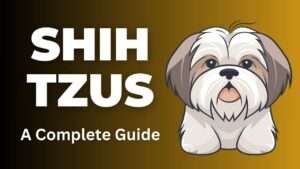


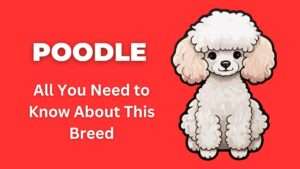
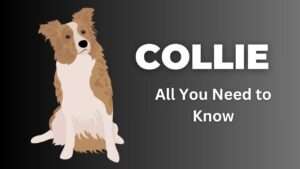





+ There are no comments
Add yours